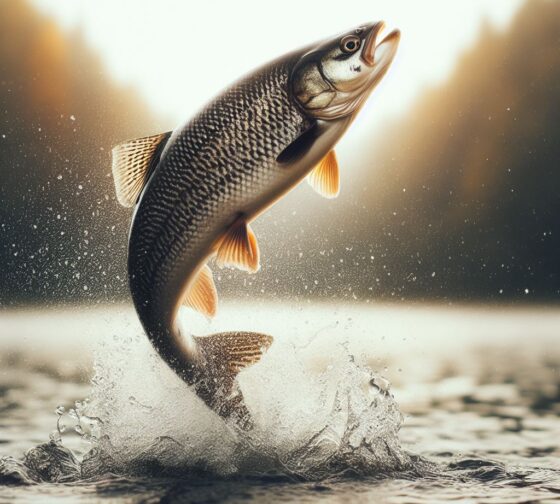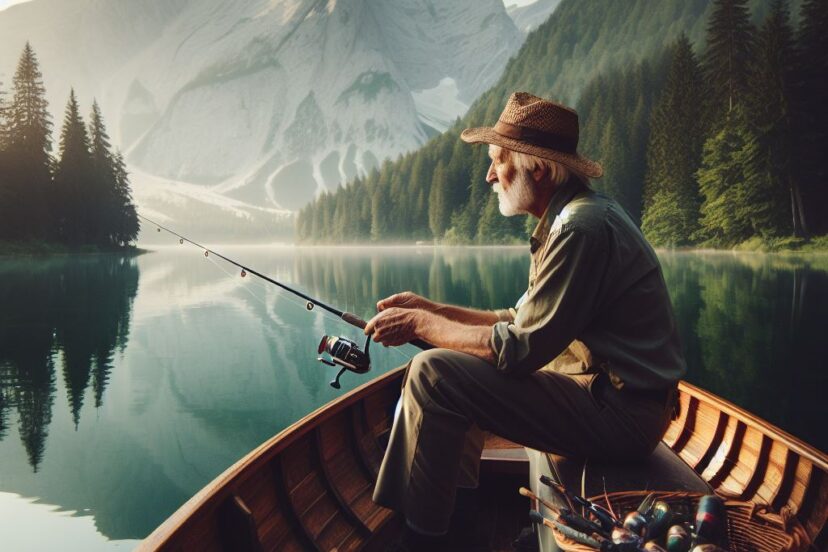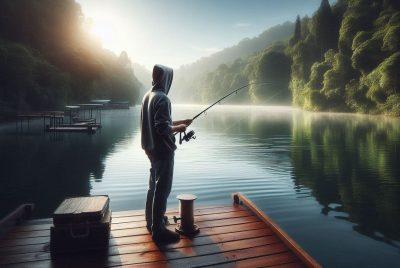Fish Hooking: The Art of Persuasion
*We may earn a commission for purchases made using our links. Please see our disclosure to learn more.
Fish Hooking Techniques: Mastering the Art of Angling
Fish hooking has a dual identity in both the world of combat sports and angling. In grappling and self-defense, it refers to the technique of inserting fingers into an opponent’s orifices, such as the mouth or nose, and pulling. This move, known for its potential to cause pain and tissue damage, is considered illegal in most organized fighting competitions due to its dangerous nature.
When discussing recreational or sport fishing, fish hooking takes on an entirely different meaning. It’s all about the method of catching fish using hooks. These hooks are devices designed to snag the fish by the mouth or, occasionally, the body. Various types of hooks and techniques are used, ensuring efficient and responsible angling practices. My understanding of these themes encompasses the safety considerations and ethical implications associated with each application of fish hooking.
Fundamentals of Fish Hooking
In this section, I’ll cover the essential aspects of fish hooking, such as its historical background, the anatomy of a fish hook, and key hook placement techniques used to enhance the angling experience.
History and Origin of Fish Hooking
Fish hooking has been integral to human survival and culture, evolving from rudimentary tools to highly specialized equipment. The origin of fish hooking traces back to prehistoric times when early humans fashioned hooks from bones, shells, and wood. The practice has since progressed and been influenced by various activities, including combat sports like catch wrestling and self-defense systems like krav maga, where ‘fish hooking’ refers to a prohibited technique involving the hooking of an opponent’s mouth or nostrils.
Anatomy of a Fish Hook
Understanding the components of a fish hook is crucial for efficient angling. Here is an outline of its basic structure:
- Eye: The loop where the fishing line is attached.
- Shank: The straight section that extends from the eye to the bend.
- Bend: The curved part of the hook.
- Point: The sharp end that penetrates the fish’s mouth.
- Barb: A projection intended to prevent the hook from dislodging.
There are several types of fish hooks, each designed for different applications. Circle hooks, with inward-facing points, are known for reducing gut hooking and improving fish survival rates. J-hooks, on the other hand, are shaped like the letter ‘J’ and are effective for a variety of fishing techniques.
Hook Placement Techniques
Successfully setting a hook is a foundational skill in fishing. I prioritize the following techniques:
- Timing: Quickly yet carefully timing the hook set can make a significant difference in securing a catch.
- Placement: Proper placement of hooks while using live bait is vital. For example, when I use circle hooks, I aim for the side of the fish’s mouth to ensure ethical and efficient catch and release.
Choosing the right hook size and type, such as treble hooks for lures or single hooks for bait fishing, directly impacts my success in angling.
By adhering to these principles and techniques, I enhance not only my catch rate but also contribute to sustainable fishing practices.
Fish Hooking Techniques and Tackle

In my experience, selecting the right tackle and mastering the subtleties of fishing techniques can make a significant difference in angling success. Here, I’ll focus on the vital aspects of choosing and setting hooks, which are central to effective fishing.
Choosing the Right Hook
Understanding the various types of fish hooks is crucial for any angler. Depending on my target species, I adjust my hook choice, considering factors like hook size and style. For instance, circle hooks are great for catch-and-release due to their design that typically catches the fish in the corner of the mouth, reducing harm. J-hooks, on the other hand, are more traditional and can be used across numerous applications but require timely hook sets. For situations involving predators that attack schools of fish, treble hooks, which consist of three combined hooks, can increase hook-up chances.
- Hook Size: Adjust hook size based on the target fish.
- Example: Large hooks for species like bass, smaller for trout.
- Hook Type: Match hook type to the fishing technique and bait.
- Live Bait: Smaller hooks concealed within the bait are often more effective.
- Travel Fishing: Pack varied sizes and types to be prepared for different fish species.
Setting and Baiting Hooks
Properly setting the hook is as important as selecting the right one. For live bait, I ensure hooks are properly baited to appear natural and entice the fish. The bait should not inhibit the hook’s point or the fish’s ability to take it in.
- Setting the Hook: A steady pull once I feel the weight of the fish often ensures successful hooking.
- Timing is key—avoid setting too early.
- For circle hooks, I reel in steadily instead of a jerking motion.
- Baiting Techniques:
- Pin baits to the hook at points where the hook point can protrude.
- For live bait like worms or minnows, hook them just enough to keep them on without excessively harming the bait.
By considering these details in hook selection and baiting techniques, my fishing endeavors tend to be more rewarding and sustainable.
Fish Hooking: Guides and Tips for Anglers
In my years as an angler, I’ve collected a treasure of knowledge that spans from essential boating safety to the intricate art of fish-hooking. Below are fundamental insights tailored for fellow fishing enthusiasts.
Safety and Conservation
Boating safety is paramount; hence, I always make sure to carry a well-stocked safety kit and adhere to the guidelines outlined in my boat buyers guide. When it comes to game fish conservation, I believe in practicing catch and release, especially for species that are not abundant. This not only sustains fish populations but also ensures that future generations can enjoy the thrill of catching game fish in both saltwater and freshwater.
Travel fishing adventures may take you to remote inshore and nearshore locales where safe boating habits become even more critical. I recommend:
- Checking local boating tips and regulations.
- Wearing life jackets at all times.
- Being mindful of weather conditions and water currents.
Advanced Fishing Strategies
Over time, I’ve polished techniques like slow-trolling, drifting, and bottom fishing to increase my catch rate. For those who fish with live bait, it’s crucial to understand the behavior of both the bait and the target species to optimize hooking chances.
While shallow water fishing, I focus on stealth and use lighter gear to not spook the fish. Here’s a quick rundown of some advanced strategies I use:
- For slow-trolling, I maintain a precise speed to keep the bait appealing to the game fish.
- Drifting allows for covering a larger area and is effective when I target fish like flounder or seatrout.
- Bottom fishing is a go-to method when I aim for species that dwell near the seabed.
Marine Electronics and Gear
I trust my marine electronics as they are indispensable for successful trips, especially when locating fish in challenging environments. A robust fishfinder or GPS unit helps in pinpointing the hotspots, whether in deep or shallow waters.
My electronics gear checklist includes:
- High-definition fishfinder
- GPS navigation system
- VHF Marine Radio for safety and communication
For fishing knots, I rely on trusty choices like the Palomar and Improved Clinch Knots for their strength and ease of tying. Keeping up with the latest in gear and tactics through email newsletters and magazines ensures I’m always equipped with cutting-edge knowledge and equipment.
Fish Hooking – Species-Specific Fishing Insights

In targeting various fish species, understanding the nuances of their behavior and anatomy is essential. My focus here is to share precise tactics for live bait fishing, particularly for predatory fish, and to emphasize anatomical knowledge that’s crucial for successful angling.
Live Bait Fishing for Predators
When I target game fish like kingfish, sailfish, or dolphin (mahi-mahi), my choice of live bait is key. I often use ballyhoo, pilchards, or menhaden, as these are incredibly effective. It’s important to keep the live bait in a livewell to maintain their vigor and appeal. Kingfish, with their preference for flashy prey, strike vigorously at live baits that mimic injured fish. Here’s how I approach using live bait:
- Kingfish: Cast live bait near the surface; their vicious attacks focus around the upper water column.
- Sailfish and Dolphin: I use kite fishing to suspend live baits on the surface to stimulate aggressive strikes.
To ensure the bait behaves naturally, hooking them through the nose or just above the anal fin maximizes their swimming ability and attract predators effectively.
Understanding Fish Anatomy
Knowing the anatomical features of target species is paramount. Predatory saltwater fish often have sharp eyesight, and they rely on it to detect prey from a distance. Their vision is adapted to locate prey above them, influenced by the position of their eyes. The dorsal and anal fins are also indicative of their swimming patterns and can hint at the most effective hook placement. For instance:
- Eyes: When fishing for predators, it’s crucial to consider their line of sight and cast bait where they can easily spot it.
- Upper Jaw and Fins: Hook placement either in the upper jaw for secure hook sets or near fins like the dorsal or anal fin for live baits can influence the success rate.
Through patient observation and respecting each species’ unique anatomy and behavior, I’ve honed my approach to fishing and increased my success in hooking these magnificent creatures.
Conclusion
Below is a quick summary:
- Fishing Hooks:
- Select the right type for the target species.
- Use single hooks to ease removal and reduce harm.
- Practice safe handling and removal to protect marine life.
FAQs About Fish Hooking
1. What are the common injuries associated with fish hooking?
When a fish hook accidentally penetrates skin, it can cause puncture wounds. These injuries sometimes become infected if not treated properly.
2. How does one safely remove a fish hook from a person?
To safely remove a fish hook from a person, I stabilize the area and carefully push the barb through the skin to clip it off before sliding the hook back out the way it came in.
3. What methods are effective for preventing fish hook injuries while fishing?
I prevent fish hook injuries by handling tackle carefully, using barbless hooks or crimping the barbs, and always keeping my eyes on the fishing line and people around me.
4. How can fish hooks vary in design for different fishing techniques?
Fish hooks are designed with various shapes, sizes, and materials to suit different types of fish and fishing techniques, such as bait fishing or fly fishing.
5. What first aid steps should be taken if someone gets fish hooked?
If someone gets fish hooked, I immediately wash the wound with clean water, apply antiseptic, and seek medical attention if the hook is deeply embedded or in a sensitive area.




